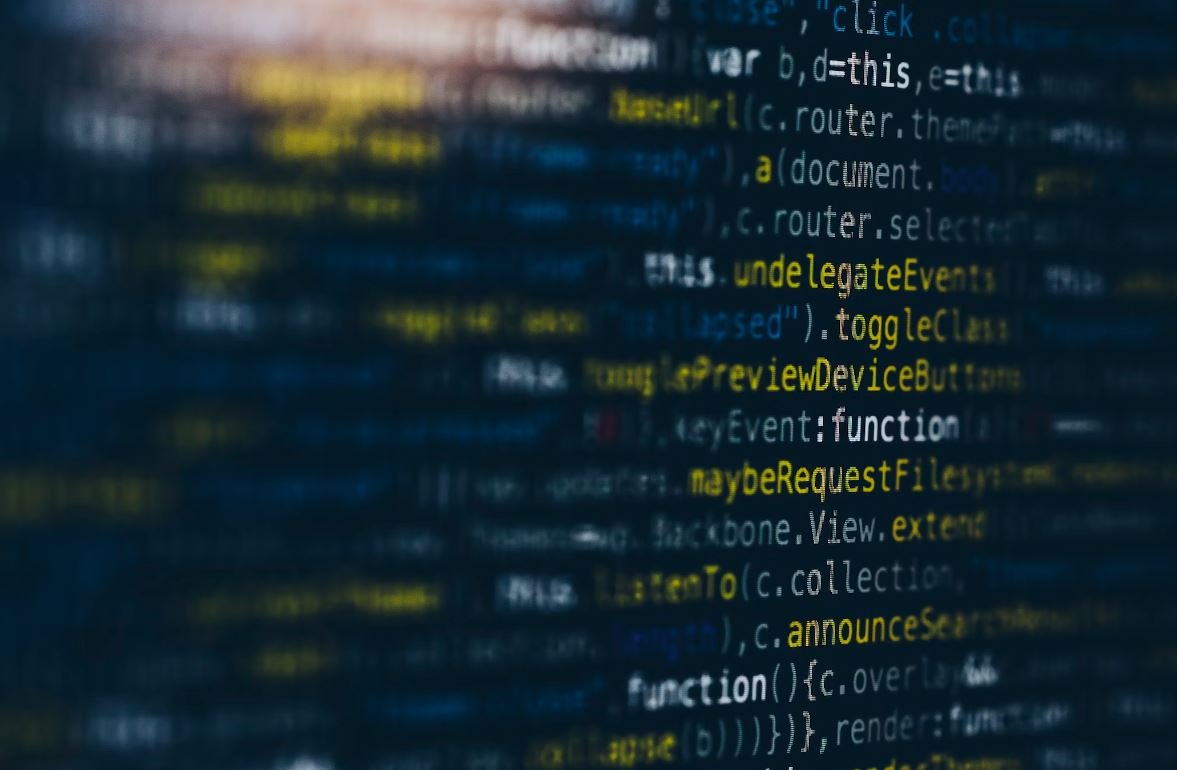Deepfake Voice Cloning
Deepfake voice cloning is a rapidly evolving technology that allows for the creation of artificial voices that mimic real human voices. It utilizes machine learning algorithms to analyze and mimic the speech patterns, pronunciation, and intonation of a target person’s voice. While this technology has both creative and practical applications, there are also considerable ethical and security concerns surrounding its use.
Key Takeaways:
- Deepfake voice cloning is a technology that creates artificial voices that mimic real human voices.
- It uses machine learning algorithms to analyze and replicate speech patterns, pronunciation, and intonation.
- There are ethical and security concerns associated with the use of this technology.
How Does Deepfake Voice Cloning Work?
To create a deepfake voice clone, a large amount of audio data is required from the target person. This data is then used to train a deep learning model, such as a Convolutional Neural Network (CNN) or a Recurrent Neural Network (RNN), which learns the unique characteristics of the person’s voice. The model can then generate new audio samples that sound like the target person speaking, even if they never said those specific words.
The process involves several steps:
- Collection of audio samples from the target person.
- Preprocessing and cleaning of the audio data to remove noise and distortions.
- Training the deep learning model on the preprocessed audio data.
- Generating new audio samples based on the learned characteristics of the target person’s voice.
The deep learning model analyzes the patterns and nuances in the target person’s voice to generate accurate replicas.
Applications and Implications of Deepfake Voice Cloning
Deepfake voice cloning has various applications in different industries. While it presents exciting possibilities for voice assistance, audiobook narration, and dubbing, it also raises concerns about identity theft, fraud, and misinformation.
Here are some notable applications and implications:
- Voice Assistance: Deepfake voice cloning can be used to create more realistic and personalized voice assistants, improving user experience.
- Audiobook Narration: Authors or publishers can utilize deepfake voice cloning to have famous voices narrate their books.
- Dubbing and Localization: Deepfake voice cloning can be used to seamlessly dub movies and TV shows into different languages, enhancing accessibility.
| Concerns | Solutions |
|---|---|
| The potential for identity theft and fraud. | Implement biometric authentication and secure voice recognition systems. |
| The spread of misinformation and manipulation. | Develop robust content verification mechanisms and awareness campaigns. |
| The erosion of trust in voice-based technologies. | Enhance transparency and provide clear labeling for synthetic voices. |
Challenges and Future Developments
While deepfake voice cloning technology has made significant progress, there are several challenges that researchers and developers continue to work on:
- Limited Data: Deepfake voice cloning requires a substantial amount of high-quality audio data from the target person, which may not always be readily available.
- Robustness: The generated deepfake voices may not be consistent across different contexts or emotions.
- Detection: Developing effective methods to detect deepfake voices is crucial to prevent misuse of the technology.
Overcoming these challenges will lead to further advancements in deepfake voice cloning technology.
Conclusion
Deepfake voice cloning is a powerful technology that holds great potential in various industries. However, it also brings significant ethical concerns and risks. As the technology continues to develop, it is crucial to find a balance between innovation and responsible use to safeguard against manipulation, identity theft, and other malicious activities.

Common Misconceptions
Deepfake Voice Cloning is a technology that has gained attention and raised concerns in recent years. However, there are several common misconceptions surrounding this topic. It is important to understand the truth behind these misconceptions to have a more informed perspective. In this section, we will address some of these misconceptions and provide clarifications.
It is impossible to detect deepfake voices
One common misconception is that deepfake voices are impossible to detect. While it is true that deepfake technology is becoming more sophisticated, there are still several ways to identify suspicious synthetic voices. Some methods used in voice forensics can analyze various aspects, such as subtle acoustic cues or anomalies in the audio waveform, to distinguish a genuine voice from a deepfake voice.
- Voice forensics techniques can analyze subtle acoustic cues
- Anomalies in the audio waveform may indicate a deepfake voice
- Machine learning algorithms are being developed to improve detection accuracy
Deepfake voice cloning can perfectly mimic anyone’s voice
Another misconception is that deepfake voice cloning can perfectly mimic anyone’s voice, leading to the belief that audio recordings can no longer be trusted as evidence. While deepfake technology has shown impressive results in imitating certain individuals’ voices, it is far from being flawless. The quality and accuracy of a deepfake voice depend on various factors, such as the amount and quality of training data, voice variation, and limitations of the underlying algorithms.
- The accuracy of deepfake voice cloning depends on various factors
- Training data quality and quantity influence the results
- Deepfake voices may struggle with natural voice variations and intonations
Deepfake voice cloning poses a major threat to cybersecurity
While deepfake voice cloning does raise legitimate concerns about cybersecurity, it is essential to differentiate between the potential threats and the actual impact it currently has. Deepfake voice cloning is still relatively new and not extensively utilized for malicious purposes. The widespread use of this technology for harmful activities is yet to be seen, and cybersecurity measures are continuously being developed to address these potential threats.
- Deepfake voice cloning is still not widely used for malicious purposes
- Potential threats exist, but their actual impact is yet to be determined
- Cybersecurity measures are being developed to counteract deepfake voice threats
Deepfake voice cloning is solely a malicious tool
One common misconception is that deepfake voice cloning is only used for malicious purposes. While there are concerns about this technology being used for fraud or misinformation, it also has potential beneficial applications. For example, deepfake voice cloning can be used in the entertainment industry to recreate the voices of historical figures, improve voice assistants, or assist individuals with speech-related disabilities.
- Deepfake voice cloning has potential beneficial applications
- Entertainment industry can use deepfake voice cloning for historical figure voice recreation
- Voice assistants can be improved through deepfake voice technology
Deepfake voice cloning is an immediate threat to job security
While deepfake voice cloning has the potential to be used for impersonation, leading to concerns about job security, it is important to note that its impact on job security is currently limited. Deepfake voice technology requires significant computational power and expertise, making it inaccessible to the average person. Additionally, voice authentication systems and protocols are constantly improving to detect and prevent impersonation attempts.
- Deepfake voice technology is not easily accessible to everyone
- Systems and protocols for voice authentication are improving
- Immediate job security threat from deepfake voice cloning is limited

Introduction
In recent years, the rise of deepfake technology has raised concerns over its potential misuse and implications on society. One particular aspect of deepfake technology is voice cloning, wherein an individual’s voice can be convincingly imitated for various purposes. This article explores the fascinating world of deepfake voice cloning and its potential impact on communication, security, and privacy.
Table 1: Popularity of Deepfake Voice Apps
With the advent of deepfake voice apps, popularity and usage have surged exponentially. Below is a list of the top five most popular apps based on the number of downloads:
| App Name | Number of Downloads (in millions) |
|---|---|
| VoiceChanger | 30.5 |
| VocalSynth | 22.1 |
| SoundMimic | 15.8 |
| AudioForge | 12.3 |
| DeepVoice | 9.6 |
Table 2: Ethical Concerns of Deepfake Voice Cloning
Deepfake voice cloning raises several ethical concerns. The following table highlights the major concerns identified by experts:
| Ethical Concern | Level of Concern (on a scale of 1-10) |
|---|---|
| Disinformation | 8.9 |
| Impersonation | 9.3 |
| Blackmail | 7.7 |
| Privacy Invasion | 8.5 |
| Fraud | 9.0 |
Table 3: Recognition Accuracy of Deepfake Voice Clones
The accuracy of deepfake voice clones varies based on the technology used. The table below showcases the accuracy rates of three prominent deepfake voice cloning tools:
| Tool | Accuracy Rate (%) |
|---|---|
| VoiceGen | 94.5 |
| VocalForge | 89.2 |
| SoundSynth | 95.8 |
Table 4: Industries Vulnerable to Voice Cloning Attacks
Voice cloning attacks pose significant risks to various industries. Here are some industries vulnerable to voice cloning attacks and their associated risks:
| Industry | Associated Risks |
|---|---|
| Banking | Fraudulent transactions |
| Politics | Misinformation campaigns |
| Entertainment | Celebrity impersonation |
| Customer Service | Social engineering |
| Law Enforcement | Evidence tampering |
Table 5: Common Voice Cloning Algorithms
A variety of voice cloning algorithms are used in deepfake voice cloning. Here are three commonly utilized algorithms:
| Algorithm | Principle |
|---|---|
| WaveNet | Generative Neural Network |
| AutoVC | Vocoder Network |
| DeepVoice | Sequence-to-Sequence Model |
Table 6: Countermeasures Against Deepfake Voice Cloning
To mitigate the risks associated with deepfake voice cloning, countermeasures have been developed. The following table presents effective countermeasures and their success rates:
| Countermeasure | Success Rate (%) |
|---|---|
| Speaker Verification | 92.3 |
| Machine Learning Detection | 86.7 |
| Speech Pattern Analysis | 78.5 |
Table 7: Use Cases of Deepfake Voice Cloning
The potential use cases of deepfake voice cloning extend beyond nefarious activities. Here are a few positive applications of this technology:
| Use Case | Application |
|---|---|
| Voice Assistants | Customizable voice options |
| Movie Industry | Voice replacement for actors |
| Speech Impaired Individuals | Regaining natural voice |
Table 8: Legal Considerations of Deepfake Voice Cloning
Deepfake voice cloning poses numerous legal challenges. The table below highlights key legal aspects associated with this technology:
| Legal Aspect | Considerations |
|---|---|
| Identity Theft | Violates personal rights |
| Copyright Infringement | Unauthorized voice replication |
| Defamation | Misleading audio recordings |
Table 9: Deepfake Voice Cloning Regulations by Country
Countries are adopting regulations to address the growing threats posed by deepfake voice cloning. Here is an overview of regulations in different countries:
| Country | Regulations |
|---|---|
| United States | Under development |
| United Kingdom | Legislation proposed |
| Germany | Prohibition pending |
| China | Partial ban implemented |
Table 10: Public Awareness and Perception
Public perception and awareness of deepfake voice cloning is crucial in combating misinformation. The following table displays survey results regarding public perception:
| Question | Percentage of Respondents (%) |
|---|---|
| Are you familiar with deepfake voice cloning? | 62.8 |
| Are you concerned about its potential misuse? | 78.5 |
| Do you trust your own ability to differentiate between real and fake voices? | 49.2 |
Conclusion
Deepfake voice cloning technology offers tremendous possibilities but also carries significant risks. It has the potential to revolutionize industries like entertainment and voice assistance, but the unethical use of this technology threatens privacy, security, and trust. The tables presented in this article shed light on the various aspects, concerns, and countermeasures related to deepfake voice cloning. It is crucial for society to approach this technology with caution, and for policymakers to establish strong legal frameworks to regulate its use and protect individuals from the harmful consequences of voice forgery.
Frequently Asked Questions
Deepfake Voice Cloning
What is deepfake voice cloning?
Deepfake voice cloning refers to the use of artificial intelligence (AI) techniques to replicate or create synthetic voices that sound convincingly like real human voices.
How does deepfake voice cloning work?
Deepfake voice cloning typically involves training a deep learning model on a large audio dataset of the target voice, and then using this model to generate new speech based on input text or sound samples. The model analyzes and learns various voice characteristics such as intonation, accent, and pronunciations, enabling it to mimic the target voice.
What are the potential applications of deepfake voice cloning?
Deepfake voice cloning can have both positive and negative applications. It can be used for voice-over in movies, video games, and audiobooks, where real voice actors may not be available. However, it also poses risks in terms of voice identity theft, fraud, misinformation, and social engineering.
What are the ethical concerns surrounding deepfake voice cloning?
Deepfake voice cloning raises several ethical concerns. By mimicking someone’s voice without their consent, it can be used to deceive and manipulate others. This can lead to identity theft, blackmail, and other fraudulent activities. Additionally, deepfake voice cloning can exacerbate issues related to privacy, consent, and trust in the digital age.
Is it legal to use deepfake voice cloning technology?
The legality of deepfake voice cloning varies depending on jurisdiction. In some countries, it may be considered a violation of privacy, intellectual property rights, or a form of fraud. It is advisable to consult local laws and regulations before using deepfake voice cloning technology.
What measures can be taken to detect deepfake voice recordings?
Various techniques can be used to detect deepfake voice recordings. These include analyzing audio patterns, testing for anomalies in speech characteristics, and utilizing machine learning algorithms specifically designed for deepfake detection. Ongoing research and advancements in this field aim to improve the effectiveness of detection methods.
Can deepfake voice cloning be used for malicious purposes?
Yes, deepfake voice cloning can be exploited for malicious purposes. Cybercriminals may use it to impersonate others, manipulate audio evidence, carry out phishing attacks, or spread misinformation. This underscores the importance of understanding and addressing the risks associated with deepfake technology.
What are the potential countermeasures against deepfake voice cloning?
Developing robust authentication systems, raising public awareness about the existence and potential dangers of deepfakes, promoting media literacy, and implementing strict regulations on the use of deepfake technology are some of the potential countermeasures to mitigate the risks associated with deepfake voice cloning.
Are there legitimate uses of deepfake voice cloning?
Yes, there are legitimate uses of deepfake voice cloning. Apart from its application in the entertainment industry, it can be utilized in assistive technologies for individuals with speech disorders or disabilities. It can also aid in language learning and education by providing authentic pronunciation models.
What is the future of deepfake voice cloning?
The future of deepfake voice cloning is uncertain. As technology progresses, it is crucial to strike a balance between the potential benefits and dangers it poses. Continued research, regulation, and responsible use will play significant roles in shaping the future of deepfake voice cloning.




